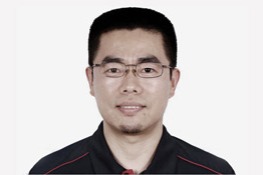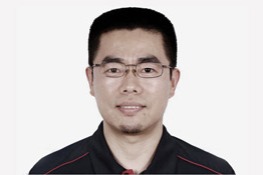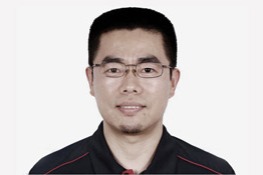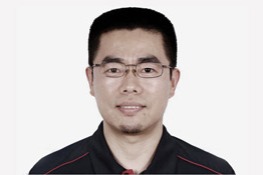Ghosts of their former selves? 空壳
中国日报网 2023-06-27 11:26

Reader question:
Please explain this sentence: Many old towns are now ghosts of their former selves.
My comments:
Many of these old towns are dead, and ghosts-like.
People have moved out, looking for better jobs, perhaps, and a better life. Houses are empty and uncared for. You hardly see anyone if you walk around.
Things like that.
These old towns are likened to ghosts, in short.
Ghosts are the spirits of dead persons who, some believe, pay visits to the living now and then. Ghosts usually appear in transparent form. They look weightless and lack of substance.
In other words, they’re not what they used to be.
And they used to be strong and healthy, vibrant and active. Now, they’re lifeless.
In our example, these old towns are likened to such ghosts. Formerly, they were great, prosperous and vibrant with all the hustle and bustle. Now they look dead.
In other words, these towns have seen better days.
All right, here are a few recent media examples of a person or thing turning into a ghost of their former self:
1. On an April morning in 1907, a three-masted yacht, the Victoria and Albert, dropped anchor at the northern end of the Bay of Palermo. Royal banners flapped in the wind while officers and cadets in smart naval uniforms swarmed over polished decks. Rumors quickly spread through the streets of Palermo, and crowds began to gather on the quays, hoping for a glimpse of the passengers. As the tenders were being lowered, people craned their necks for a better view of the burly gentleman in a homburg hat who was boarding one of the boats. Edward VII, the king of England, had come to call on the Florio family at the Villa Igiea.
At the beginning of the 20th century, when the Sicilian capital was as fashionable as Nice, the Villa Igiea’s guest book read like an international Who's Who. In a cosmopolitan whirl of balls and costume parties, cocktail receptions and gala dinners, Archduke Franz Ferdinand of Austria, Tsar Nicholas II, Queen Marie of Romania, Constantine I of Greece, and Vajiravudh, the king of Siam, all came to stay. The Vanderbilts turned up in their yacht, as did Nathan Rothschild and J. P. Morgan. Opera singers, playboys, minor aristocrats, and that new phenomenon, movie stars, all followed.
But few of the ladies wafting in their enormous bonnets among the oleander on the garden terraces, or the gentlemen smoking cigars by the seawall, could see the shadows that were encroaching on their famous hosts. In those careless years, there was still an enigmatic, Gatsby-like aura around Ignazio and Franca Florio. They appeared effortless, elegantly poised in a life of privilege and wealth. Having inherited one of the country's greatest fortunes at the age of 23, Ignazio was, in the words of The New York Times, one of the merchant princes of Europe. The daughter of one of Sicily's old aristocratic families, Donna Franca was “tall, slender, supple, swaying,” in the description of poet Gabriele d’Annunzio. Palermitans dubbed her the Queen of Palermo.
The family was the Italian equivalent of the great 19th-century American commercial dynasties like the Rockefellers, Carnegies, and Gettys. In the 1780s, Paolo Florio arrived in Palermo from Calabria and opened a humble spice shop. Four generations later, the Florios dominated the economic life not just of Sicily, but of Italy, with interests in shipping, shipbuilding, railways, mining, metallurgy, fishing, ceramics, and wine. They were said to employ 16,000 people. They founded a newspaper and a bank. They ran 90 ocean liners to all points of the globe. When they bought and redesigned a villa overlooking Palermo Bay, they created both a grand hotel for a glittering clientele and a Florio palace.
I had come to see the resurrection of this great hotel, an icon of the Belle Époque, and to revisit Palermo, a city I adore. But in the rooms and elegant dining halls, and out on those dreamy tiered gardens overlooking the bay, it was impossible to escape the presence of the Florios. I found myself tracing the way those delirious days and nights among their famous guests had been overtaken by heartbreak, and by the family’s eventual exile from the Villa Igiea.
Palermo is the most underrated city in Italy. I would rather spend a day there than a week in Florence. It is chaotic, seductive, swaggering, unruly, and endlessly charming. It veers between bellowing backstreet neighborhoods and grand monuments of soaring beauty. It is impossible to understand Italy, Goethe said, without visiting Sicily. He called it the “clue to everything.”
A millennium ago, Sicily lay at the center of the world. The island has Phoenician ruins, Carthaginian shipwrecks, Greek temples, Roman villas, Arab pleasure palaces, and Bourbon castles. When the Normans arrived, they seized upon the tradition of Byzantine mosaics and made those shimmering surfaces all their own. Up in the town of Monreale, the nave of the great Norman cathedral swims with golden light, while down in the center of Palermo the mosaics of the Capella Palatina are some of the masterpieces of European art.
...
In the early decades of the 19th century, the entrepreneurial Florios stepped into this antique world, so exquisitely evoked in Giuseppe di Lampedusa's novel “The Leopard.” Like many successful business families, they married into an increasingly impoverished aristocracy, swapping their wealth for social cachet. Ignazio’s father, Ignazio Sr., had married a Sicilian baroness. Ignazio himself proposed to Francesca Paola Jacona della Motta dei Baroni di San Giuliano, commonly known as Donna Franca. Any objections from her father had nothing to do with the family's humble origins. He was more concerned about Ignazio’s reputation as a womanizer.
He was right to worry. Soon after their wedding, Ignazio went on safari in North Africa with 50 porters. You would have thought one of them might have removed the women’s underwear from his luggage, which was discovered by Donna Franca on his return. It was only the first of many indiscretions. In Giovanni Boldoni’s famous portrait of Donna Franca, which once hung in the Villa Igiea, she wears a long string of pearls. It is said Ignazio gave her a pearl every time he needed to ask for her forgiveness. Apparently there are 365 – one for every day of the year.
A picture was emerging of this golden couple: Ignazio, wayward, spoiled, impulsive, easily tempted; Donna Franca, determined, intelligent, constant, confident. When Ignazio invited the opera singer Lina Cavalieri, frequently described at the time as the most beautiful woman in the world, to sing at the Teatro Massimo, Donna Franca knew what was going on. She employed a boisterous claque to whistle during the performance while she sat in the royal box, looking imperious. Cavalieri left the stage on the verge of tears and departed Palermo the following morning.
Donna Franca’s stage was the Grand Hotel Villa Igiea, its cast of admiring celebrity guests a consoling audience. Designed by the famed Palermo architect Ernesto Basile and opened in 1900, the villa is a masterpiece of Belle Époque modernism, a style known in Italy as Liberty – named for the London department store. After the Florios were forced to sell the property in 1929, it continued to operate as a hotel through the 20th century. But it was a ghost of its former self. Under a succession of owners, it grew increasingly frayed around the edges. Finally bankruptcy loomed, and in 2019 the hotel was bought at auction by Rocco Forte, the British hotelier with Italian roots, for $29 million.
- Sicily’s Most Legendary Private Villa Has Reopened As a Luxury Hotel, by Stanley Stewart, TravelAndLeisure.com, April 24, 2022.
2. What’s the difference between giving someone the help we think they need and the help they actually need?
Zach Braff’s new film, starring Florence Pugh and Morgan Freeman, acknowledges that there is no black-and-white answer to this question. Instead, “A Good Person” holds the audience captive in shades of gray tension before exploding into a kaleidoscope of redemption arcs that, woven together, might just make a rainbow.
If its Jersey setting wasn't enough of a clue that this will be a heavy film, “A Good Person” promises disaster by opening with a peace so saccharine that it must mean something awful is coming. The first few scenes give the audience a glimpse into the bliss that is Allison (Pugh) and Nathan’s (Chinaza Uche) relationship – fresh engagement and all – and has viewers waiting with bated breath for the inevitable tragedy that makes movies like this so painful and so important.
A warning, dear reader: That proverbial other shoe falls with such force, it may feel like it has stomped right on the seat in which you sit.
While driving Nathan’s sister and brother-in-law into Manhattan for her wedding dress fitting, Allison checks the map on her phone. Her glance down was brief, but it was enough to cause an accident that would kill both her future sister- and brother-in-law. The next thing we see is Allison waking up in the hospital with a head injury, finding out about the fatalities.
A year passes and our main character is hardly recognizable. Allison is a ghost of her former self, colorless and mismatched, haunting the halls of her mother Diane’s (a delightfully inept Molly Shannon) home. The wedding has not only been canceled, but she and Nathan are no longer in each other’s lives at all.
Like many of us, Allison looks for quick fixes for her pain and trauma. Her commitment to a shallow iteration of self-care seems at first sad but innocuous: an overflowing drugstore makeup collection, incessant fingernail painting and panic-induced sprints on the stationary bike. But these behaviors give way to a fit of rage when Allison finds out that her mother has hidden what's left of the OxyContin she was prescribed after the accident.
Diane, unequipped to handle her daughter’s addiction, vacillates between flushing Allison’s last handful of pills one day and apologetically supplying her with a co-worker’s leftover pain meds the next. Diane swears she’d do anything to help her daughter, but when Allison asks her to reach out to her ex-husband (Allison’s dad) for the money to enroll in an in-patient recovery program, it becomes clear there is one thing Diane is not willing to sacrifice for her daughter’s sake: her pride.
Unsupported by family and unable to get the help she needs, Allison bikes to her first Alcoholics Anonymous meeting, only to run into Nathan’s father, Daniel (Freeman). Overcome with shame at the sight of the man whose daughter’s life she had ended, Allison tries to flee the church basement. But Daniel insists that she stay.
If Allison’s mother was the film’s first example of the wrong kind of help, Daniel is the first example of the right kind. Daniel isn’t presented as a perfect hero – his rage over the accident that took his daughter and son-in-law and left him to parent their teenager alone simmers right below the surface for the entire film – but he is the first character to rise above his own self-interest.
In a demonstration of Christlike patience and virtue, Daniel takes Allison under his wing and mentors her through her journey to sobriety. He even brings her into his home, where we meet his granddaughter, Ryan, who was orphaned by the car crash. Against all odds, Ryan and Allison become friends; it’s as unlikely a pairing as the friendship between Daniel and Allison.
- ‘A Good Person’ asks hard questions about grief and addiction, NCROnline.com, April 15, 2023.
3. When King Charles III became King he inherited from his mother, the late Queen Elizabeth II who died on 8 September aged 96, an enormous property portfolio.
Although the coronation on 6 May is full of symbolism and pageantry, he has already taken the title of King. The ceremony formalises the monarch’s role as the head of the Church of England and marks the transfer of his title and powers but it is not actually necessary for the monarch to be crowned to become King.
Among the powers afforded the new King is ownership of a vast property empire, but just how much of that real estate is actually at his disposal?
The bulk of the property now owned by the King is held on his behalf by the Crown Estate.
The Crown Estate operates as a real estate business to the royal family and returns all its profits to the Treasury.
The King will, however, receive a 15 per cent grant of total profits earned from the Estate.
The British monarchy has assets estimated at roughly A$40 billion, largely in real estate, including a number of castles and palaces.
Forbes, which has published a list of the world’s wealthiest for years, last year estimated the Queen’s net worth at A$730 million.
Although the King, like his mother before him and his successors after, receives income from many of the assets, the royal family do not actually have personal, legal ownership of those assets, so they are unable to sell them.
The assets are held by a variety of quasi-public duchies and estates, each with their own executives and boards, with financial reports published annually. The duchies and estates generate income, much of which goes to the government, with a considerable sum given to royal family members.
Property within the Crown Estate’s central London portfolio includes almost the entirety of Regent Street, and an estimated half of the buildings in the St James’ area, comprising retail, residential and office space.
Outside of the capital, the Crown Estate is the owner of 14 retail and shopping parks and three shopping centres.
…
So, while it’s true the King and his investment vehicles do not own property overseas, there is the small matter of Crown land.
Although we have come to think of the British Empire as being a ghost of its former self, in reality King Charles III owns only 22 per cent less than Queen Victoria did during the height of the Empire.
The King will continue to, in strict legal terms, own all the lands of Britain, Canada, Australia, New Zealand, 32 other members (around two-thirds) of the Commonwealth, and Antarctica.
Despite the belief held by many Australian landholders that they own their land absolutely, including anything above or below it, due to the Doctrine of Tenure, the law in Australia holds that the Crown has absolute ownership - not withstanding any native title claims.
- Does the royal family own property in Australia? APIMagazine.com, June 5, 2023.
本文仅代表作者本人观点,与本网立场无关。欢迎大家讨论学术问题,尊重他人,禁止人身攻击和发布一切违反国家现行法律法规的内容。
About the author:

Zhang Xin is Trainer at chinadaily.com.cn. He has been with China Daily since 1988, when he graduated from Beijing Foreign Studies University. Write him at: zhangxin@chinadaily.com.cn, or raise a question for potential use in a future column.
(作者:张欣 编辑:丹妮)

















 英语点津微信
英语点津微信 双语小程序
双语小程序